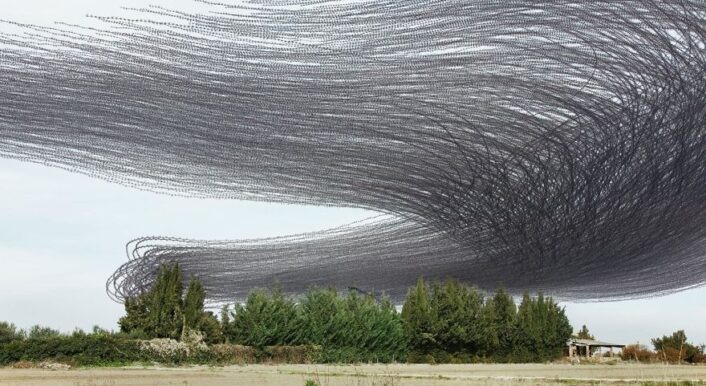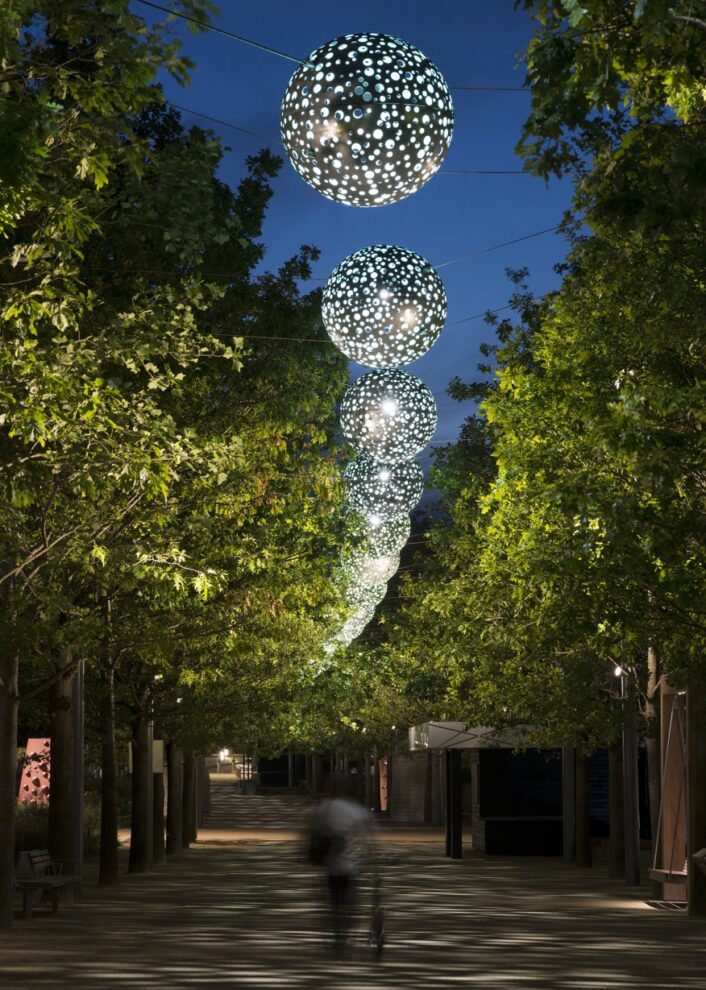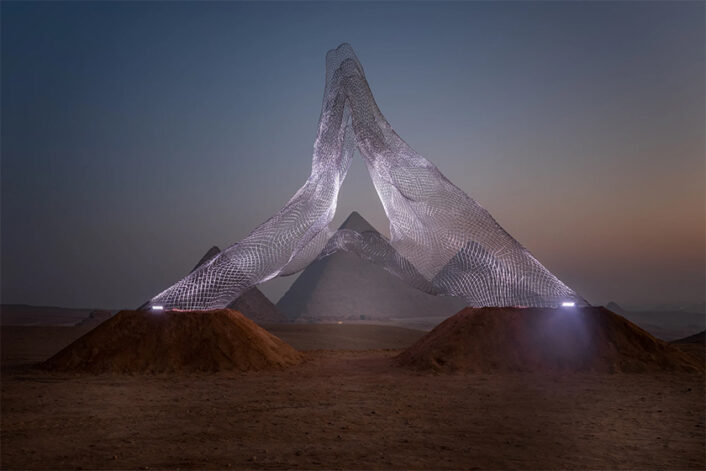Architecture
Leo Villareal
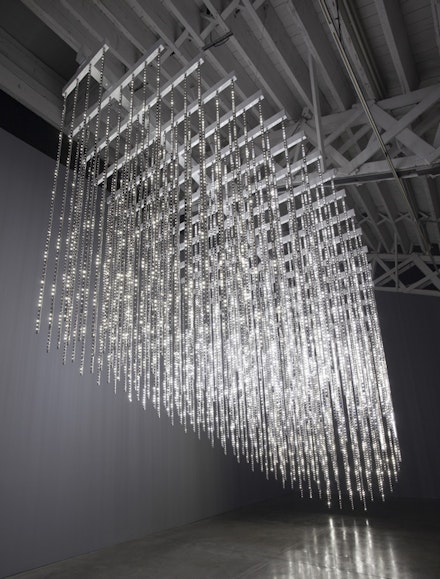
From 2017, an installation view of “Leo Villareal” at 537 West 24th Street.
Image courtesy of: The Brooklyn Rail, photographed by: Mark Waldhauser (courtesy of Pace Gallery)
Leo Villareal has been called the “modern sculptor of light.” The artist is best known for his use of LED lights to create immersive works for public art projects and galleries alike. As part sculptor, part computer coder, part electrician, and part engineer, Villareal has captivated audiences throughout the world with his innovative and utterly creative light shows.
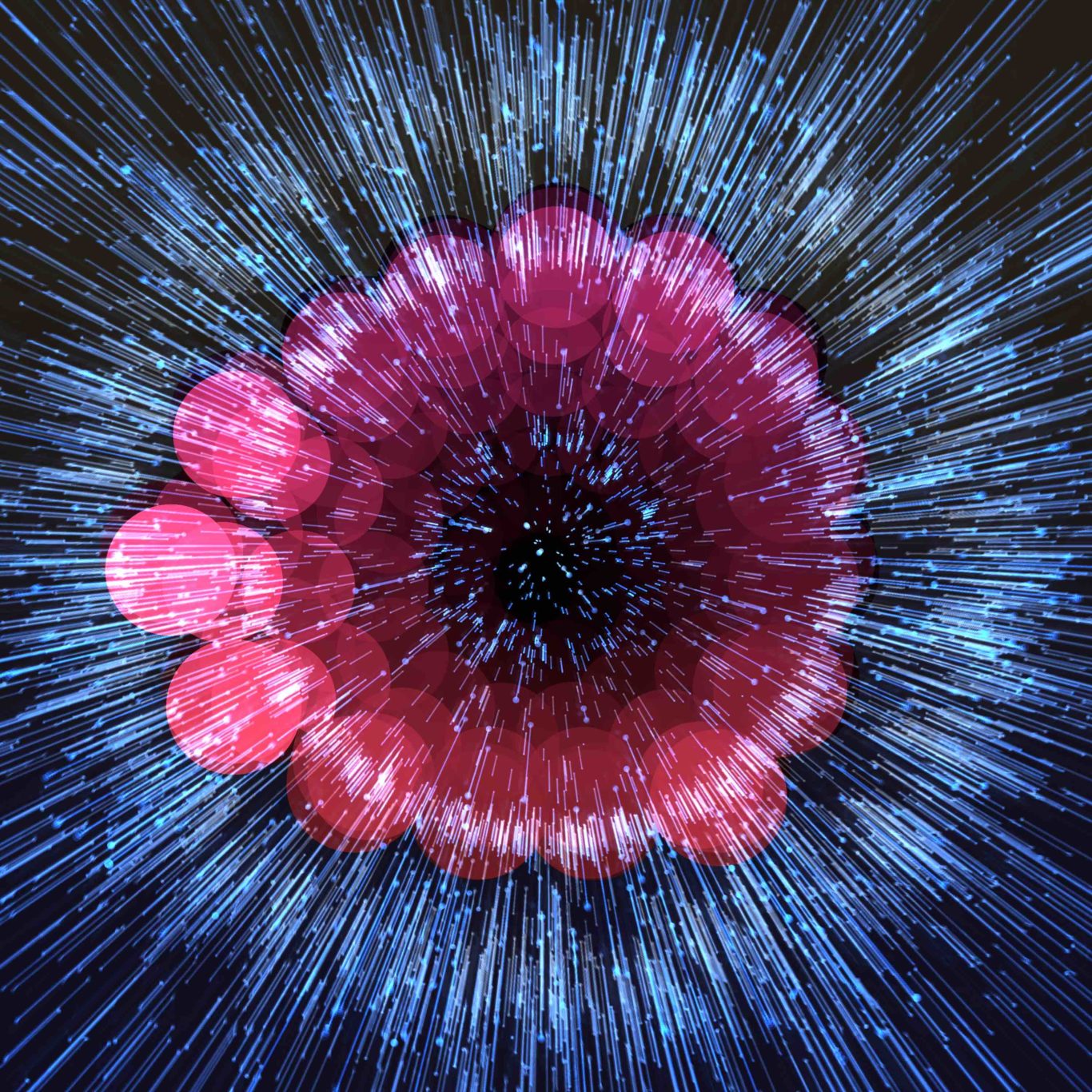
“Cosmic Reef 5,” 2022; part of an exhibition at Pace Gallery in Palm Beach, Florida.
Image courtesy of: Whitewall
Villareal’s custom software helps him create (courtesy of the artist’s web site) “compositions that are displayed in random order and for a random amount of time.” Using artist-created code, Villareal works at continuously changing the environment through sequencing via intensity, frequency, and patterning.
The artist seeks to use custom software and lights to explore things that he is interested in. A random array of LED lights, diffused with acrylic, serve as the starting point… his canvas, so to speak. Villareal then works on his software to create a program with sequences; he generates “occurrences” and watches for anomalies. When that discovery occurs, it is the starting point for his artwork.
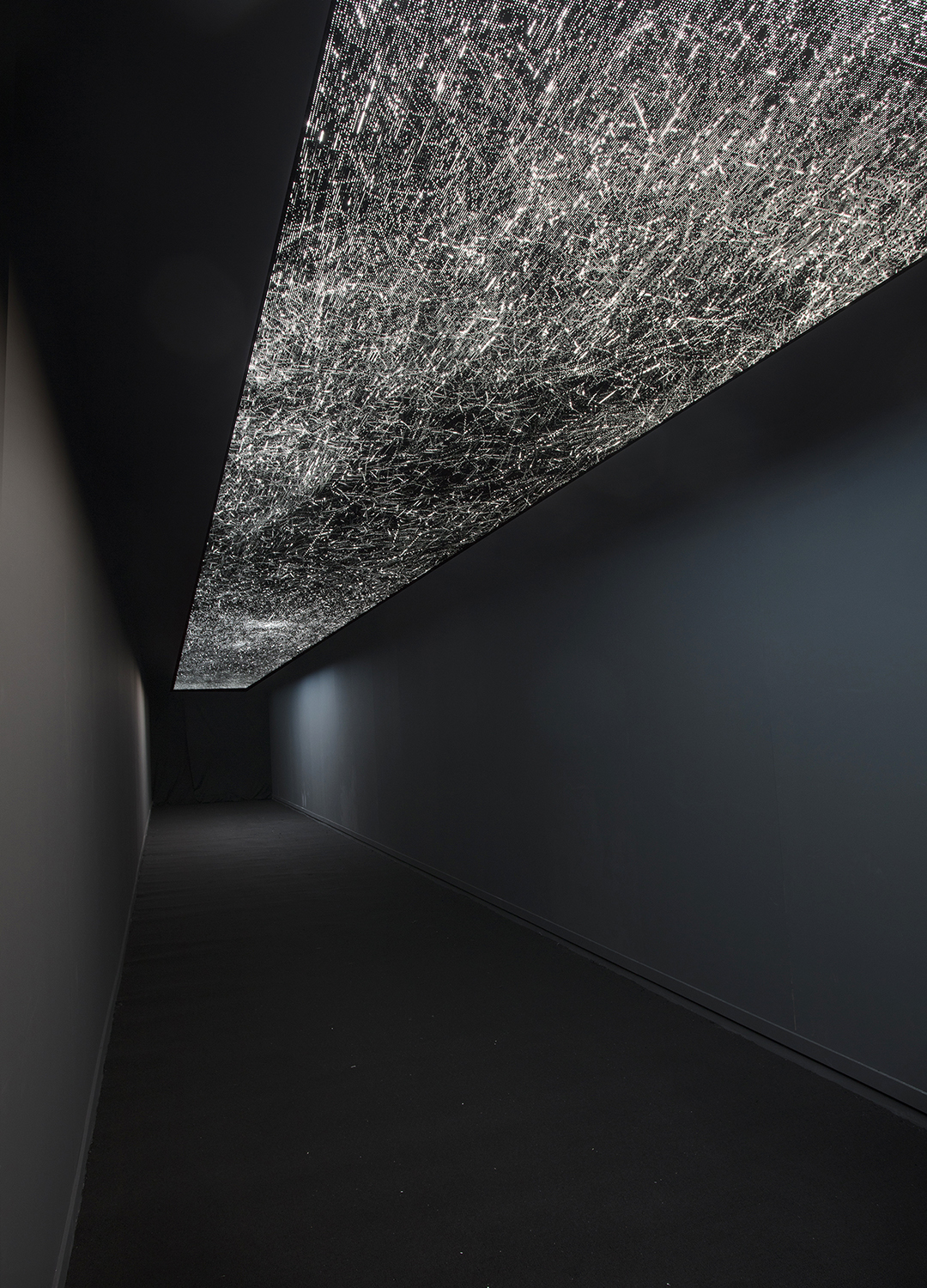
“Star Ceiling” at the Armory Show in New York City, March 2019.
Image courtesy of: Galerie Magazine, photographed by: Rich Lee (courtesy of Pace Gallery)
2019’s Armory Show was one of Villareal’s first “big moments.” The previous year, the artist was approached by the fair’s organizers to create an immersive work for the show’s 25th anniversary. Villareal’s work, a 75-foot-long LED piece that was installed in a passageway connecting the main section (Pier 94) with the eastern section (Pier 92), was an instant hit… and an immediate Instagram sensation!
Audiences traveling between the two pieces became, in essence, (courtesy of ArtNet) “part of a landscape that induces an experience of deep connectedness.” The travel is achieved on both a physical and a theoretical basis as an ever-changing “field of light” luminates the passageway’s ceiling.
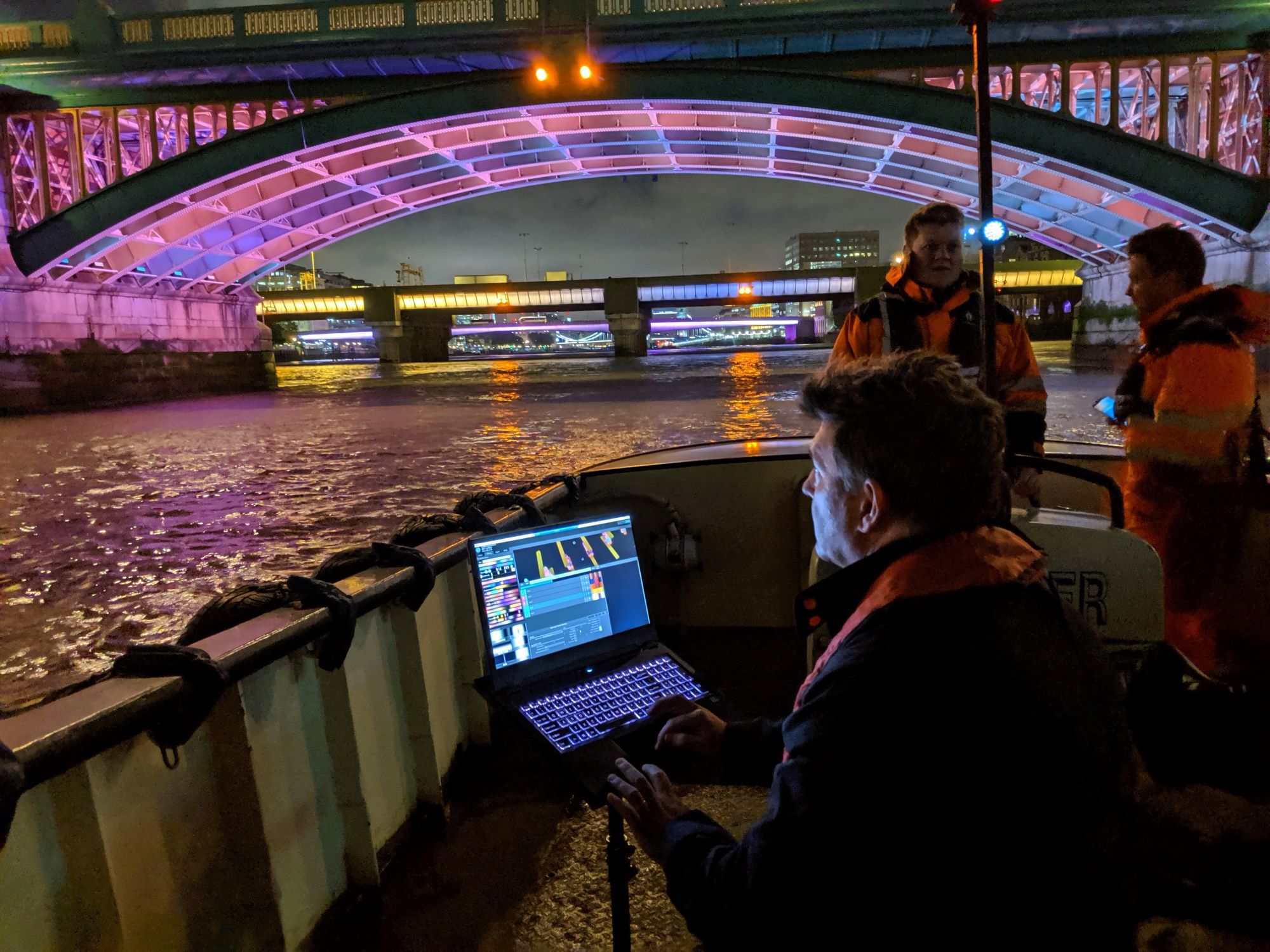
Villareal working on “Illuminated River” of the Thames in London. The artist needed to secure thirty permits from eighteen landmark buildings prior to starting the exhaustive project.
Image courtesy of: ArtNet (copyright by Illuminating River)
Creating his own computer software for over twenty years, Villareal loves to create his own set of rules while leaving room for the element of chance. Courtesy of his web site, “The artist’s goal is to create a rich environment in which emergent behavior can occur without a preconceived outcome.”
Villareal considers himself an artist… just one who uses technology as his medium. However, it is relevant to point out that technology does not overtake the initial idea; rather, technology works to remain connected to the idea in a way that makes sense.
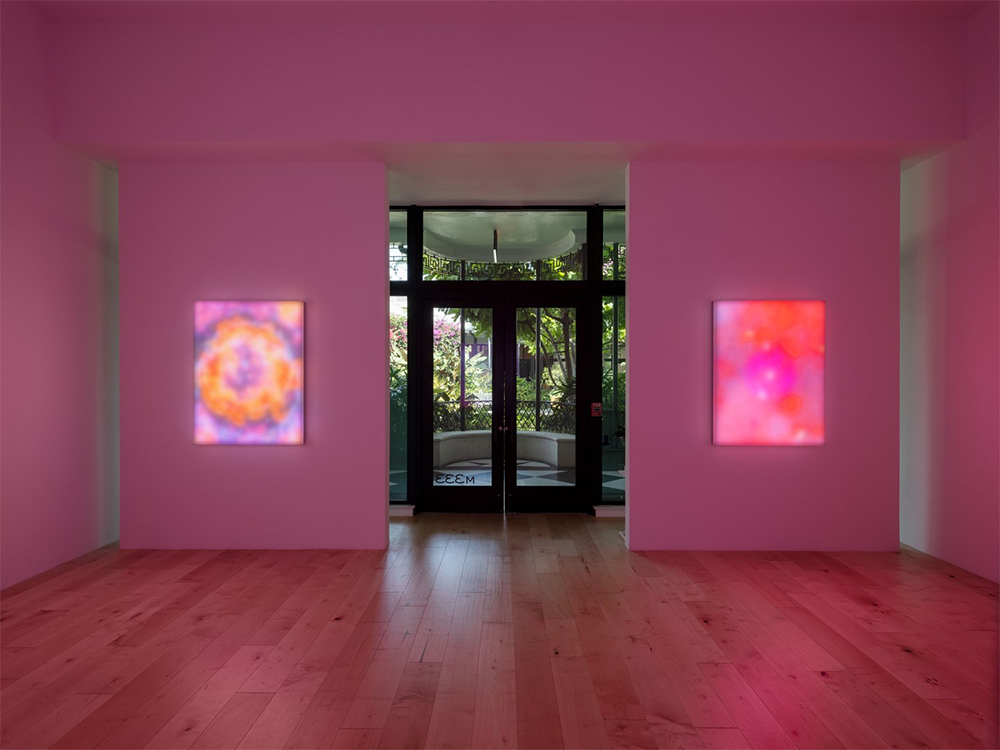
At Pace Gallery in Palm Beach, “Nebulae,” 2022.
Image courtesy of: Leo Villareal
Over the years, Villareal has created many site specific works throughout the world at many iconic locations including the Metropolitan Transportation Authority at the Bleecker Street subway station in Manhattan, the Dallas Cowboy’s Headquarters in Frisco, Texas, and The National Museum of Art in Washington, D.C. Villareal’s work is also in the permanent collections at a number of museums including the National Gallery of Art, Washington, D.C. and The Museum of Modern Art in New York City.
As the world of technology and the world of art continue to intersect, perhaps there is no other artist that can enable audiences to delve into the unknown between the physical and the digital realms so efficiently. Villareal explains it best (via an article in 2019 for Galerie Magazine), “My main inspiration comes from natural phenomena and the desire to understand how such systems work. Instead of creating representations, I use abstraction to evoke what we are attracted to and know intimately as humans.”
